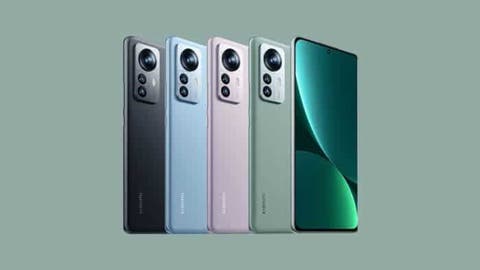A few hours ago, Xiaomi took to Weibo to introduce two exclusive core technologies in the Xiaomi 12 Pro. The company announced the sliding variable speed screen and natural eye protection mode.
1. Sliding variable speed screen
The Xiaomi 12 Pro uses the second-generation LTPO screen with a refresh rate of 120Hz and a resolution of 2K+. Xiaomi claims that LTPO allows the screen to reduce the refresh rate when there is a need to save power. This is a hardware capability but it also requires software cooperation. The Xiaomi Smart Dynamic Refresh Rate Technology takes care of this. Ideally, when swiping, the optimal refresh rate would be to set Displacement/Frames to a constant value. The longer the swipe, the more frame it requires.
In order to ensure a smooth operation, the sliding speed change of Xiaomi 12 Pro will increase the frame rate to 120Hz at the moment the user’s finger touches the screen. It will then gradually reduce the refresh rate as the sliding speed decreases. The refresh rate is 10Hz until the sliding stops. The Xiaomi 12 Pro is the only Android smartphone with this feature.
In order to achieve such a function, Xiaomi needs to refactor the ScrollView and ListView in the Android native controls to increase the ability to judge the sliding speed. In this process, you need to grasp the node that switches the frame rate. If you intervene too early, it will cause visual stuttering; if you intervene too late, it will not save power. Some scenarios do not require very high refresh rates, such as low frame rate animation, low frame rate video, and input methods. When the system detects these scenarios, it can actively reduce the screen refresh rate to save power. In browsing and reading scenarios, the screen is stationary and we can reduce the refresh rate to 10Hz or even 1Hz to greatly save power consumption.
2. Natural eye protection mode.
The Xiaomi 12 series is equipped with a smarter screen eye protection mode, which no longer adopts a “one size fits all” approach but makes different adjustments for different colors. Taking the CIE color space as an example, the color with the bluest light components is the area between pure blue (0, 0, 255) and pure white (255, 255, 255). Although other colors also have blue light components, the proportion is low.
Therefore, Xiaomi needs to treat different colors differently so that most harmful blue light can be reduced without affecting the hue of other colors. This is the natural eye protection mode of the Xiaomi 12 series.
In addition, the Xiaomi 12 series retain traditional features such as primary color screen, Dolby Vision, and 10,000-level dimming. It also supports HDR video with a peak value of over 1000nit and has passed the DisplayMate A+ certification. This is easily the best display on a Xiaomi smartphone so far.
